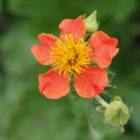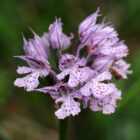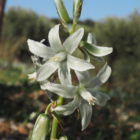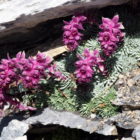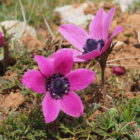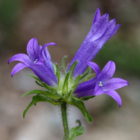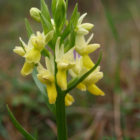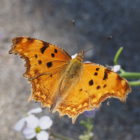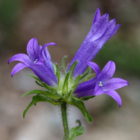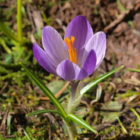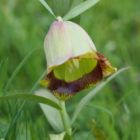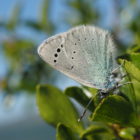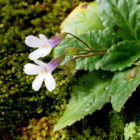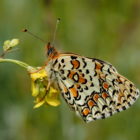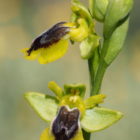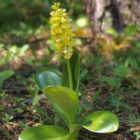Dates & Prices |
BOOK NOW |
Dates: May – available on request
Price: £TBC
Single Room Supplement: £TBC
Deposit: £150 per person
Price Includes: All meals, accommodation with private facilities, ground transport, services of guides, holiday report
Not Included: Flights, travel insurance, drinks and any other personal items.
Leader: Yiannis Christofides or another guide
Group Size: Minimum of 4 and a maximum of 12 guests plus 1-2 leaders.
Grade: Gentle paced walks in a variety of terrains. Ideally suited to photography.
Holiday Highlights
- Gentle paced week of botanical walks in dramatic & beautiful scenery
- Explore one of the most biodiverse corners of North Greece. Habitats include forests, alpine meadows, maquis & a lot more!
- Short drives and maximum time in the field
- Early bulbs, orchids, saxifrages, Greek and Balkan endemics, alpines
- Led by botanist and experienced guide Yiannis Christofides
- 2 centre tour staying in two charming family run hotels at the foothills of Falakro and Pangaio mountains
- Several spring butterflies on the wing too, including Southern Festoon, Chequered Blue & Powdered Brimstone
Roam the Greek Rhodopes for a rich tapestry of spring flora and wildlife!
Rising to 2231m (Falakro) and Pangeio (1965) are two isolated mountains in northern Greece, squeezed between the Bulgarian border and the Aegean. They consist mostly of marble or limestone and have a distinct and interesting flora. The mountains rise steeply from the plain and host a variety of habitats from Mediterranean to Alpine. They are forested with Pinus nigra, Juniper and extensive areas of beech. Many plants of the Bulgarian mountains reach their southern limit here. We will visit early in the season to see the early alpines but also to see the many orchids lower down. Pangaio lies 20 km from the coastal town of Kavala and one is in sight of the Mediterranean sea and the island of Thasos. The lower slopes are therefore heavily influenced by the Mediterranean climate and we expect to see plants such as Cistus creticus, Vicia bythinica, Matthiola fruticolosa, Lathyrus venetus, Asphodeline lutea, Muscari commosum, Paeonia officinalis, Dactylorhiza sambucina, Verbascum rupestre, Cephalanthera longifolia, Orchis mascula. Higher up we can expect to find Viola perinensis, Myosotis alpestris, Globularia meridionalis, the yellow-flowered Saxifraga ferdinardi-coburgi, Saxifraga sempervivum, S. juniperinifolia, Campanula orphanidea. Snow-melt plants include Scilla bifolia, Crocus veluchensis, Crocus chrysanthus, Fritillaria drenovskyi and Corydalis solida. Falakro lies further north, closer to the Bulgarian border. We can expect to find Viola delphinensis, Viola perinensis, Haberlea rhodopensis, Fritillaria drenovskyi, Orchis purpurea, Orchis tridentata, Globularia bisnagarica, Androsace villosa, Iris reichenbachii, Saxifraga ferdinardi-coburgi, Saxifraga stribmyi, Erythronium des-cani, Gentiana verna, Orchis palens and Pulsatilla halleri. Resident birds include Lesser spotted eagle, Bonelli’s eagle, Ortolan buntings, Green and Syrian Woodpeckers, Black-eared Wheatear, Golden Orioles, Red-backed Shrike and Sub-alpine Warbler. Butterflies to be seen include Southern Festoon, Powdered Brimstone, Green Hairstreak, Small Copper, Green-underside Blue, Eastern Baton Blue, Chequered Blue, Brown Argus, Adonis Blue, Weaver’s fritillary, Queen of Spain, Glanville and Knapweed Fritillaries. We shall spend adequate time at each of two locations, in hotels on or very near the mountains, to explore all the different habitats at a leisurely pace.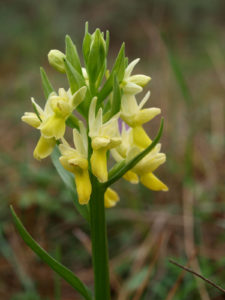
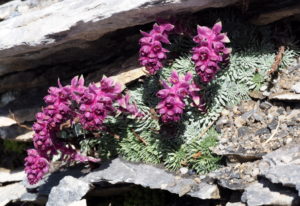
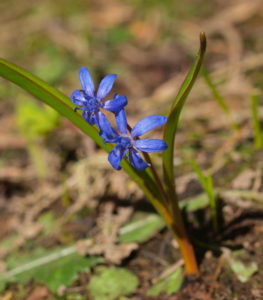
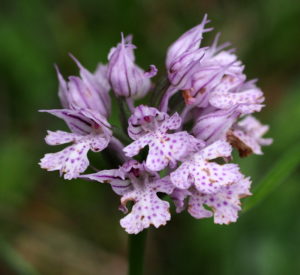
Day 1: Meet at Thessaloniki airport in the evening and transfer to our hotel close to the airport.
Day 2: Transfer to our hotel on Falakron Mountain, stopping on the way. Walk around the village in the afternoon
Day 3: Go up to the top of Mount Falakro. We will look for the early snow-melt alpines such as Erythronium dens-canis, Corydalis solida, Scilla bifolia, Crocus veluchensis and the yellow Crocus chrysanthus, moving slowly lower to look for the early flowering Saxifrages such as Saxifraga federici-augusti, S. sempervivum and the yellow-flowered Saxifraga ferdinandi-coburgi. Fritillaria drenovskii should be in flower as well as other interesting plants such as Pedicularis friderici-augusti and Viola perinensis and orchids such as Dactylorhiza romana.
Day 4 & 5: We explore the upper reaches of the Nestos and the area around the reservoir and then head towards the Bulgarian border through the magnificent Elatia forest, one of the richest forested areas in Greece. Orchids such as Orchis purpurea, Cephalanthera longifolia and Ophrys species should be seen. We shall check the rocky shady areas for Haberlea rhodopaea. A good many butterfly species should on the wing, including southern Festoon.
Day 6: Transfer day to Pangaio, exploring Mount Menoikio on the way.
Day 7: Mount Pangeio is an isolated mountain within sight of the Aegean Sea. It hosts a wide range of Balkan endemics, some like Viola grisebachii only occurring here. Above 700 m the area is dominated by beech forest hosting many central european species. On rocky outcrops we should find Geranium macrorrhizum, Sempervivum marmoreum and Iris rechenbachii. Crocus veluchensis and Androsace vitaliana flower higher up as the snow melts to be followed by Ranunculus sartorianus. Other plants we shall be looking for include Saxifraga juniperifolia and S. ferdinardii-coburgii, Fritillaria drenowskii and Fritillaria pontica.
Day 8: Transfer to Thessaloniki airport for departure. We shall spend the day closer to the coast to see some of the more typically Mediterranean plants, such as Tragopogon, Aristolochia, Anchusa, Cistus, Fumana, Helianthemum, Convolvulus, many Fabaceae and Orchis, Ophrys and Serapias species. Arrival for late departure
Testimonials to follow
Reports to follow



